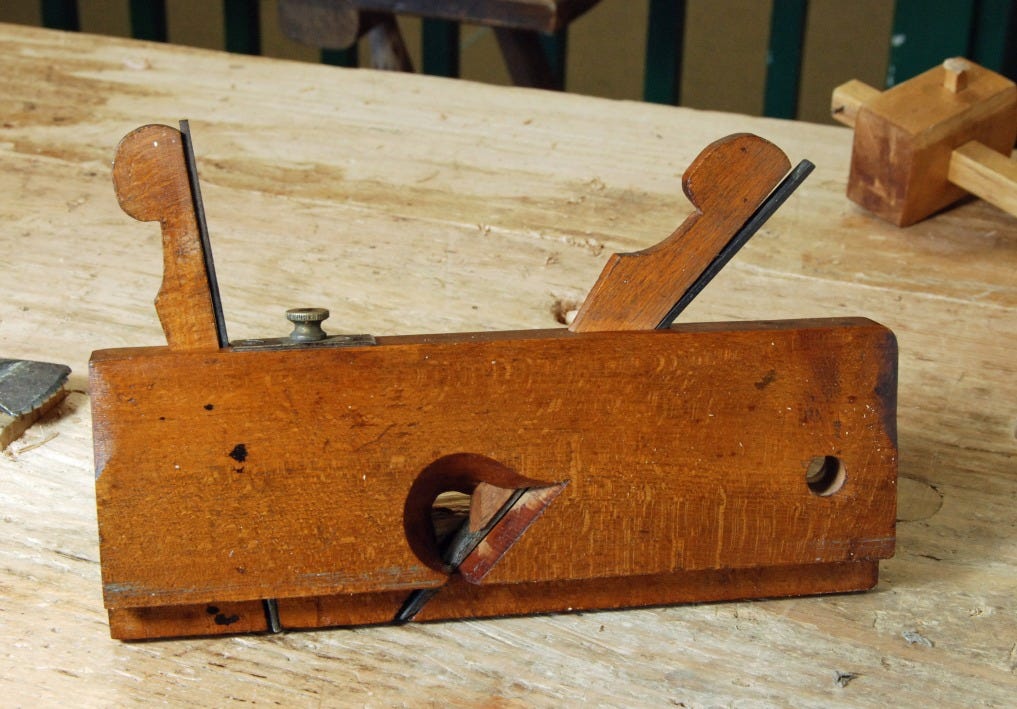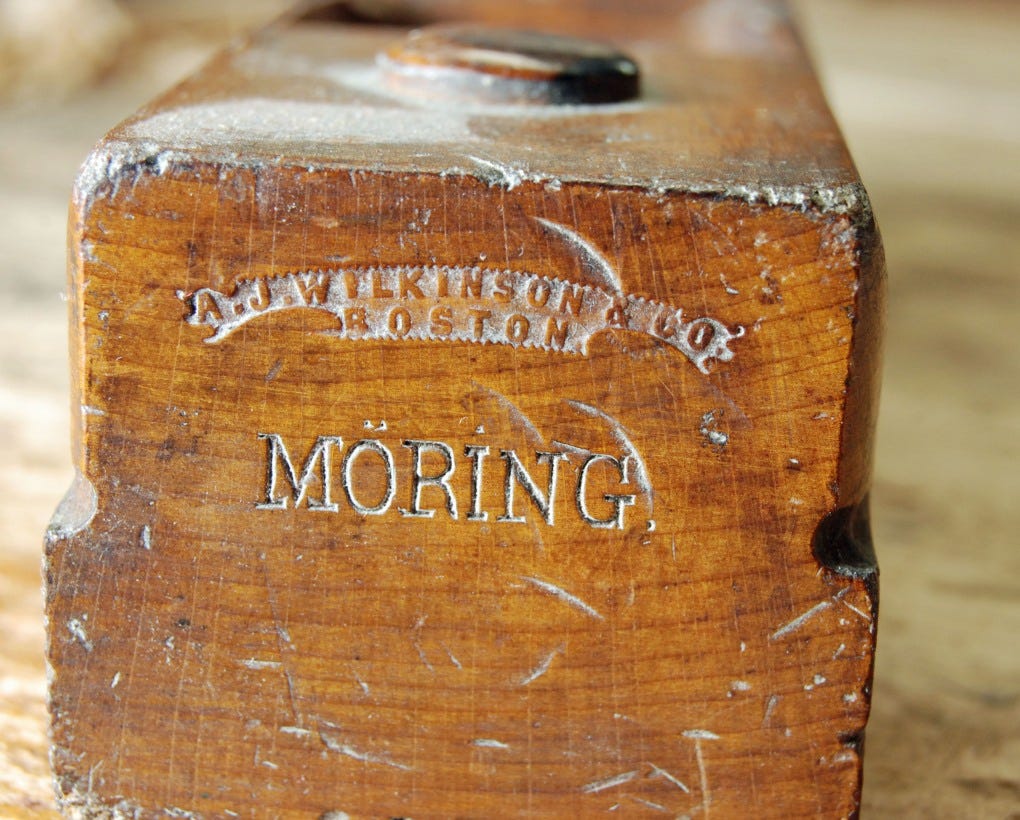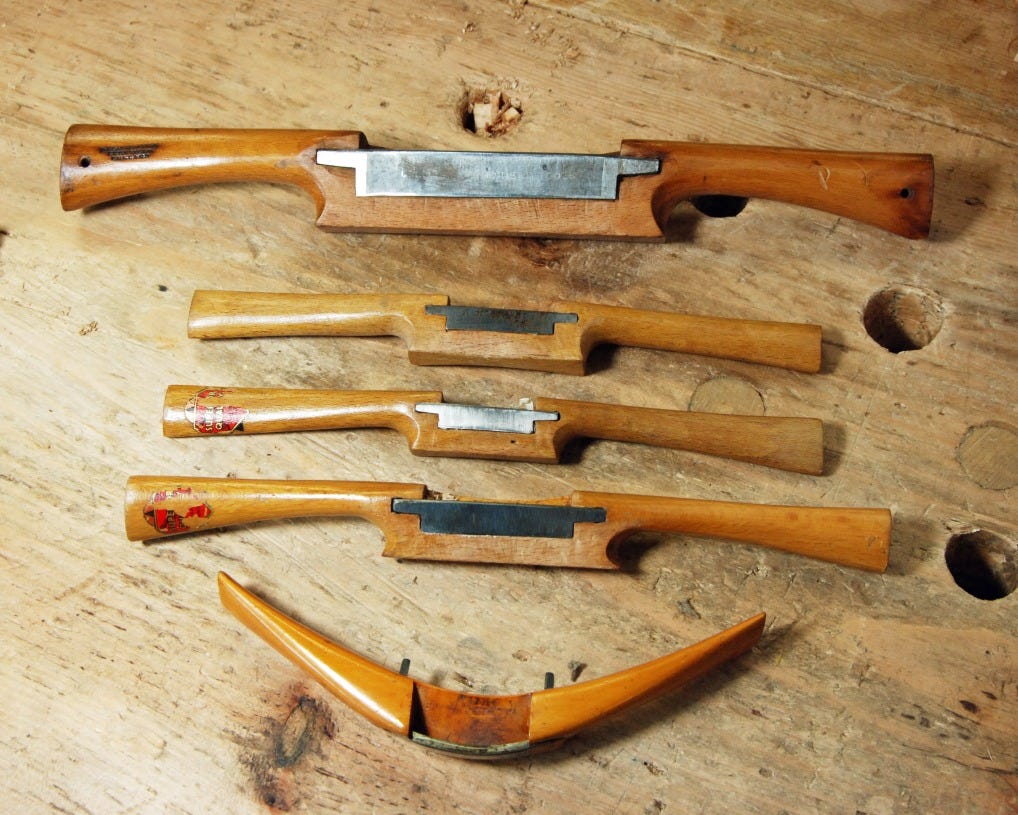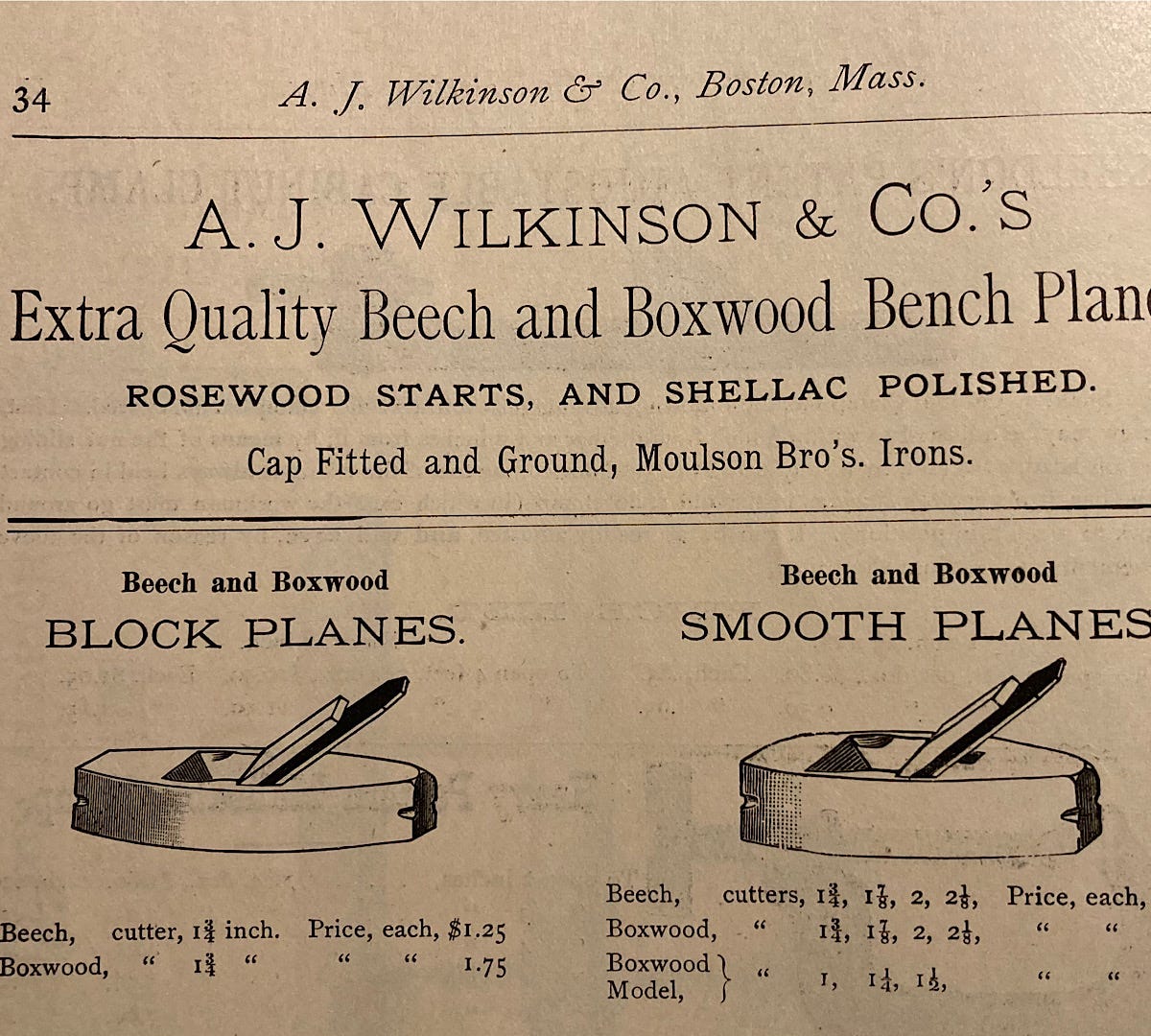[This is one of my weekly recycled posts from my old blog this time, but updated tonight. Once I week, I try to provide a free post so all subscribers can see what the blog is like. I’m still on the road, making a Windsor chair with Pete Galbert and David Douyard & six other students. It’s great being a student, there’s no pressure at all. The text in italics is from tonight, the plain text is part of the original post. Thanks for reading along, sorry if it’s a clunky post - the photos seem temperamental tonight. My apologies.]
There’s two wooden planes that I don’t use – they sit in my house instead of in the shop. They aren’t particularly valuable (at least I don’t think they are…) and neither are they very rare…
The first one is a small plane, with an unusual beech body, very fine grain in it. (I learned tonight it might be boxwood, but it seems big for that…) The length is 9” and the overall width is 2”. The iron is just shy of 1 ¾”. The strike button is some exotic hardwood, maybe lignum vitae? The iron is marked W Greaves & Sons Warranted Cast Steel. The web tells me Greaves was a Sheffield firm, early 19thcentury. [it’s a replaced blade - the original was by Moulson.]
The 2nd plane is a dado plane; cuts a 3/8” dado. Has a knicker, (or is that nicker?) and a depth stop. A garden variety molding plane; in fine shape. Little if any use. Has a hole bored in it to hang on the wall…
So what’s the story with these? I have them because they are both struck with the maker’s mark “A J Wilkinson & Co Boston.” Wilkinson’s was a hardware store & supplier, for many years titled “Boston’s Oldest Hardware Store.” The firm began in 1842. The smoothing plane, with the Greaves iron, might date from nearly that early [this statement by me was apparently based on some divine inspiration. It’s a 19th-century plane, let’s leave it at that.]
My father worked at Wilkinson’s from the day after he graduated high school, c. 1942 until his death in 1975. I can remember him telling us stories about “old man Wilkinson” who must have been the 2nd or 3rd generation…the Wilkinsons sold the place in the early 1950s…and it eventually got absorbed by some chain and floundered, I think in the 1990s. I’ve lost track.
Most of my tools that came from my father are now gone, I upgraded many of them, except for household stuff like screwdrivers, etc. I do have a couple of tools in the shop that came from his days at Wilkinson’s – this set of wooden spokeshaves for instance. I doubt he ever used them. They are Marples, who knows how old. Not as old as the planes…I used the hollowing one a lot when I made Windsor chairs.
[When I first wrote this post in 2011 it was because I got a repro of a Wilkinson’s catalog, circa 1867. This week I had a visit with my friend Joel Paul who kindly gave me an original catalog - no date, but could be 1870s or just beyond.
This time the address is Washington St & Devonshire Street - the previous one was #2 Washington Street. The dado plane is in this catalog - and something close to the smooth plane - and that’s where the notion about the boxwood comes from. Seems Wilkinson’s was at 184 Washington Street by 1875.
This catalog is 118 pages and is lots of fun to look at - when I get back home I can compare the two. I’m writing this on my ipad which is giving me no end of trouble - when I get home I’ll revisit this subject in more detail. In addition to the planes, I have some folding drawknives from Wilkinson’s and a few Disston saws (thanks, Ed Lebetkin)
It’s a little funny to think about these tools & that firm. My father never lived to see me become a woodworker…his work at home was all tablesaw & drill press oriented. But I like to think about him as a young man, working at what was, even in the 1940s, a 19th-century firm. He told me that old man Wilkinson had “long whiskers” and he used to wonder did he tuck them inside or outside the covers when he went to bed. I can answer that now…but I couldn’t at 17!










Peter, the first of the two planes you write about seems to have a lower blade angle than a smoothing plane. If so, it may well be a miter plane. These were made in two versions, one like a slimmer smoothing plane, the other rectangular.
I would occasionally need woodworking tools in the course of my regular work, usually for hanging a gate or planing a door to fit, but also spoon carving tools for when someone made me wait. When I cleaned out my father's shop I rounded up existing tools or dead files to make what I might want. The resulting collection looked like it would fit in a box about the size of the big "American Heritage" dictionary in the living room. After making the box and fitting everything into its own space, I painted it red and wrote "American Heritage Dictionary of the English Language" in yellow on the front. It rides behind the seat of the truck (with a brace, ax and handsaw in the back) and has served me well, sometimes just as a reminder. Enjoy the chair class!